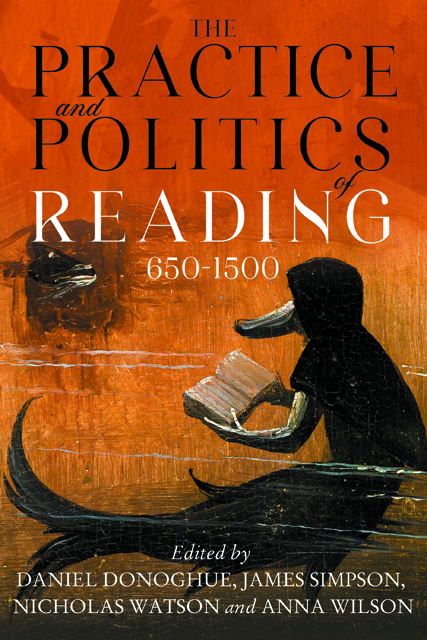8 - The Jewish Reader: A Medieval Antitype
Published online by Cambridge University Press: 11 January 2023
Summary
“I saw the image of a woman,” Hildegard of Bingen, the twelfth-century mystic, wrote, “pale from her head to her navel and black from her navel to her feet … She had no eyes, and had put her hands in her armpits; she stood next to the altar that is before the eyes of God, but she did not touch it” (Post haec vidi velut quamdam muliebrem imaginem a vertice usque ad umbilicum pallidam, et ab umbilico usque ad pedes nigram … oculos autem non habebat, manus vero suas sub axellas suas posuerat, stans juxta altare quod est ante oculos Dei, sed ipsum non tangebat). This woman – marked by her blackness, her blindness, her proximal position yet self-imposed alienation from the divine – is Synagoga, Ecclesia’s allegorical twin. We hardly require Hildegard’s interpretation of her vision in order to recognize this woman who refuses to see, who holds her hands back from holiness. Hildegard’s vision represents an encapsulation of many of medieval Christianity’s narratives about Jews. Synagoga is racialized and disabled; she is as frozen in space as she is frozen in biblical time. Hildegard’s Synagoga is less visibly monstrous than other medieval iconographic images of Jews, but Hildegard leaves her reader in no doubt that an internal monstrosity persists within the allegory of Judaism, that perverse stubbornness that leads Synagoga to remain ignorant of God even in His very presence.
For medieval Christians, the persistence of Jews within their Jewish faith was an interlinked problem of perception and will. “Behold,” Peter the Venerable charged the Jews in his twelfth-century polemic, “that since antiquity almost the entire world has acknowledged Christ while you alone do not acknowledge him … you alone remain blind, deaf, like stones. Clearly your eyes are blind, your ears are deaf, your hearts are stone” (Ecce toto pene orbe jam ab antiquo Christum agnoscente, vos soli non agnoscitis, cunctis gentibus … vos soli caeci, surdi, lapidei permanetis. Caeci plane oculis, surdi auribus, lapidei cordibus). The Jews were functionally disabled, according to Peter; their organs of insight and somatic perception indelibly shut off.
- Type
- Chapter
- Information
- The Practice and Politics of Reading, 650-1500 , pp. 181 - 199Publisher: Boydell & BrewerPrint publication year: 2022



